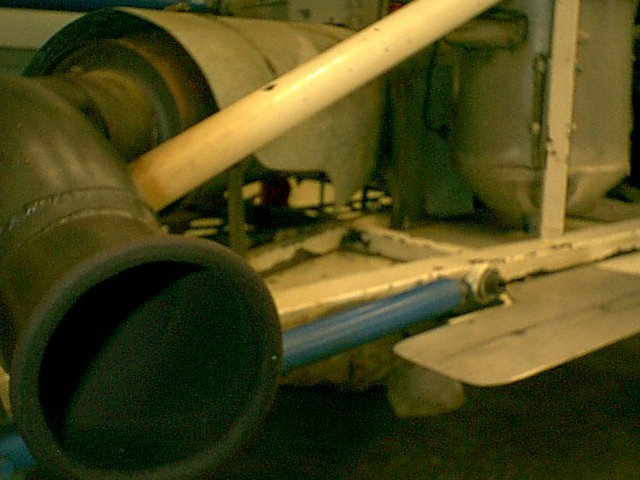|
|
In a message dated 1/14/2004 10:04:10 AM Central Standard Time,
13brv3@bellsouth.net writes:
<< Now to the question. In the Racing Beat catalog, they give some figures
for
lengths of exhaust primary tubes (22-25 inches), and sizes of tubes
(1.7-1.8" primary, at least 2-1/8" collector). They never mention anything
about the length of the larger pipe after the collector. As it turns out,
my primary tubes will be 1-3/4", and will likely end up about 27" long.
They will go into a collector that combines them into a single 2-1/4" pipe.
The 2-1/4" pipe from the collector to the muffler may only be about 12". Is
this long enough, or does the length of this collector pipe matter much?
Thanks,
Rusty >>
The rules are: (in order of importance) The run out of the engine straight as
far as you can.
The length of the primaries as close to exactly the same as possible. I found
some vacuum cleaner (like) hose that fit well in the inside of the primary
tubing. So you can shove the hose into the primary tube and mark the length on
the hose. Then shove it into the other pipe and compare the lengths. Adjust the
primary length as required to get them both the same length.
A long shallow angled collector is better torque over a greater RPM range. A
short steeper angled collector is better for peak HP over a smaller RPM range.
The Racing Beat collector is a medium long piece. Easy to make.
Most of the available tuning is finished once the flow is through the
collector. The evenly spaced shock waves are still supersonic entering the muffler.
The muffler amounts to a real big room in the exhaust pipe, so the flow drops
to subsonic (Bernoulli) and is homogenized (hopefully) into a stream of mostly
subsonic flow. The spin tech must be very strong to survive that pounding and
be of a flat sided design. There are many muffling schemes for killing off the
supersonic flow and canceling as much of the sound energy as is possible
before exiting the device.
Unfortunately there is probably going to be an increase in back pressure as a
result of the muffling effort. This will make the difference between very
well done and just fair tuning close to even as far as HP output.
The tuned lengths for the very long systems allow the flow to homogenize more
before reaching the muffler, so the muffler can be more effective, or could
be smaller and lighter. The short system (airplanes) is the worst case for
everything.
Even with stainless primaries, I would not heat wrap anything within 15" of
the flange.
Even 1/8" thick carbon steel will dissolve if you put heat tape on it. You
could probably get away with it in .063" stainless. I would build a collection
of .020" stainless shields to place between the pipes and anything that could
suffer heat damage. The simple shield will stop almost all radiant energy.
Allow for 1 or 1 1/2" gap between the pipe and the shield, so air flow can help
cool the pipes.
I have a short system with a stainless Borla 4" ID muffler. It is real heavy,
but is standing up real well. The whole muffler is heat taped. The rest of
the carbon steel system is cooled with a 3" blast hose, and is doing well.
Note the shield over the heat taped muffler. Note the burned paint near the
4" tail pipe, nearly 60" from the engine.
Lynn E. Hanover

FourInchPipe.JPG
|
|